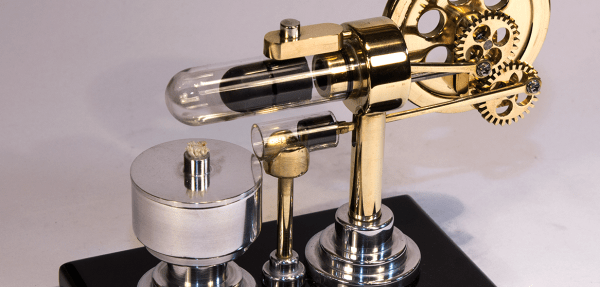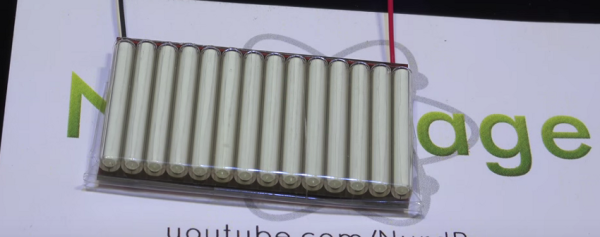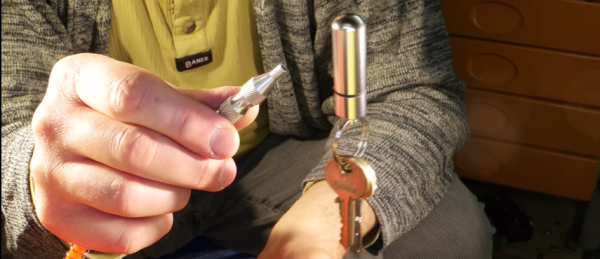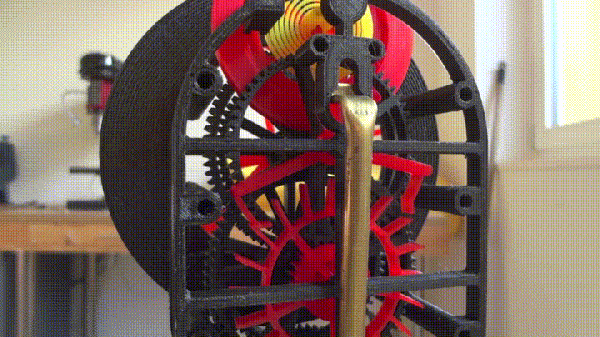In the early years of the nineteenth century, steam engines were at work in a variety of practical uses. However, they were still imperfect in many ways. One particular problem were the boilers, that had a tendency to explode, causing injuries and fatalities. Reverend Dr. Robert Stirling, a Scottish clergyman, was concerned about the death toll from exploding boilers. Based on previous work by George Cayley (known for his pioneering work on aeronautics), Stirling filed his patent for a safer engine in 1816. That makes this year the bicentenary of this engine. The Stirling engine has the highest theoretical efficiency of any thermal engine. It is also a relatively simple machine. Unlike other types of engines, there are no valves, and that makes the mechanical design much simpler.
Author: Manuel Rodriguez-Achach32 Articles
The Many Uses Of The Neon Lamp
Neon lights are that kind of nostalgic item that everybody seems to love. The neon lamp is a type of gas discharge lamp, they generate light when an electrical discharge travels through an ionized gas, or plasma. When the voltage between the electrodes exceeds certain threshold, the gas ionizes and begins conducting electricity. The basic process that generates light is the return of the ions to the ground energy state, with the emission of a photon of light. The light color depends on the emission spectra of the atoms in the gas, and also on the gas pressure, among other variables. Gas discharge lamps can be classified by the pressure of the gas:
- Low pressure: includes the neon lamp, fluorescent lamps and low pressure sodium lamps.
- High pressure: such as the metal halide, high pressure sodium and mercury vapor lamps.
Another classification comes from the heating method of the cathode:
- Hot cathode lamps: the electric arc between the electrodes is created via thermionic emission, where electrons are expelled from the electrodes because of the high temperature.
- Cold cathode lamps: In these, the electric arc results from the high voltage applied between the electrons, that ionizes the gas and conduction can take place.
High intensity lamps are another type of gas discharge lamp where a high power arc is formed between tungsten electrodes. Power levels of several kilowatts can be easily produced this type of lamp. Of course we can’t forget to mention nixie tubes, which are a type of cold cathode neon lamp, popular for building retro clocks. Fortunately, they are now in production again.
Make Your Own Nuclear Battery
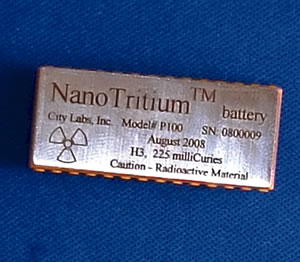
A Betavoltaic cell is a device that uses a radioactive source of beta particles and a semiconductor p-n junction to generate electricity. Tritium, an isotope of hydrogen, is often used as the radioactive element. You may think that tritium is hard to obtain or even forbidden, however, recently you can find tritium in self-lightning key chains, and it is also used in watches and firearm night sights. The beta particles (electrons) from the tritium radioactive process causes phosphors in the device to glow, giving a light that can last for years.
[NurdRage] has just created a nuclear battery using tritium vials from key chains. After getting rid of the plastic containers, he sandwiches the vials between two small solar panels. That’s all! Instant power for the next 15 years. Of course, the amount of power you can get from this device is on the order of microwatts. The battery produces around 1.6 volts at 800 nano amps. He gets 1.23 microwatts, not much, but it is in fact more than the output of commercial units at 0.84 microwatts, for a ten percent of the cost. That minuscule amount of power is actually not easy to measure, and he does a great job explaining the circuit he used to measure the current.
Tesla Coil Powered Film Canister Gatling Gun
What do you get when you combine a Tesla coil, 315 film canisters and a fortune wheel? The answer is of course a film canister Gatling gun. [ScienceBob] has taken the simple film canister cannon hack to a whole new level. The idea is simple, the film canister has a lid that fits tight and allows pressure to build up, so if you fill it with alcohol vapor and ignite it with a spark gap, you get a small explosion that sends the can flying away.
[ScienceBob] uses 21 rows of fifteen canisters each around the wheel. There is a spark gap for each canister, and all the spark gaps in the same row are in series. You need a lot of volts to turn on fifteen spark gaps, and that is why the Tesla coil is part of the game. When the outer end of the wire in one row passes near the Tesla coil, a spark jumps and fires all the spark gaps, igniting the alcohol vapor and fifteen cans are expelled from the wheel. The wheel rotates until all rows are fired.
While this nice piece of artillery is sure a lot of fun to fire, but don’t ask us to reload it! If you want more power, check this Gatling gun that fires crossbow bolts, or the Gatling water pistol.
Continue reading “Tesla Coil Powered Film Canister Gatling Gun”
Compressed Air Levitation And The Coanda Effect
What do you want to levitate today? [Latheman666] uses his air compressor to make all kinds of stuff float in mid air. Light bulb, key chain, test tube, ball bearing, tomato… pretty neat trick to try in your shop.
It is interesting to see what physics explain this behavior. The objects do not float just because they are pushed upwards by the airflow, that would be an unstable equilibrium situation. Instead, they obtain lift in a very similar way as the wings of an airplane. Not all objects will levitate using this trick: the object has to be semi-spherical at the top.
[Applied Science] nicely shows this behavior by levitating a screwdriver first, then an identical object but with a flat top. The flat top screwdriver fails to levitate. The curvature provides the path for a smooth airflow, because of the Coanda effect, creating a zone of low pressure at the top, making the situation analogous to that of an airplane wing. Therefore, for this to work, you need an object with some kind of airfoil shaped surface. Another great demonstration is that of [NightHawkInLight], using a high speed camera.
A very impressive experiment that needs nothing more than an air compressor!, we are sure you will try it next time you work with one. For more on this topic of levitation with air streams, check the ping pong ball levitation machine.
Continue reading “Compressed Air Levitation And The Coanda Effect”
The Little Mechanism That Made Precise Time-keeping Possible
There are few things to which we pay as much attention as the passage of time. We don’t want to be late for work, or a date. Even more importantly, we don’t want to age and die. Good time keeping is an all important human activity, and we started to worry about it as soon as we abandoned our hunter-gatherer lifestyle and agriculture and commerce emerged.
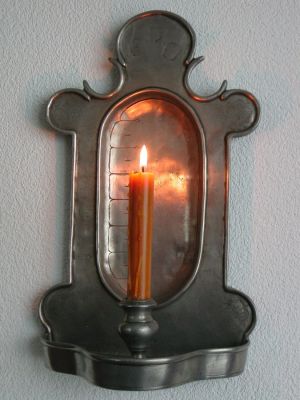
Measuring time needs two things: a repetitive process to mark equal increments of time, and a way of tracking and displaying the result. The first timekeeping devices relied of course on the movement of the sun. Ancient Egyptians, around 3500 BC, built obelisks that, by casting a shadow on the ground at different positions, gave an approximate idea of the time. Next came the use of some medium that was consumed at a regular pace: candle, incense, water and sand clocks are examples. A great advancement came with the advent of the mechanical clock, and here is where the escapement mechanism appears.
Continue reading “The Little Mechanism That Made Precise Time-keeping Possible”
Transparent Rocket Engine
Rocket engines are undeniably cool. Experiencing the roar, seeing the fire, and watching the rocket blast off into the sky… what else can you ask for? Well, for [NightHawkInLight], a transparent rocket body is the answer.
Based on previous work by [Applied Science], he uses an acrylic rod as the rocket body and as the fuel. Bring a flame into the acrylic, apply oxygen from a canister at the other end of the body and voilà! The rocket engine starts nicely, and even better, the intensity of the burn can be controlled via the amount of oxygen provided.
Continue reading “Transparent Rocket Engine”

